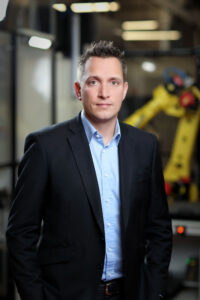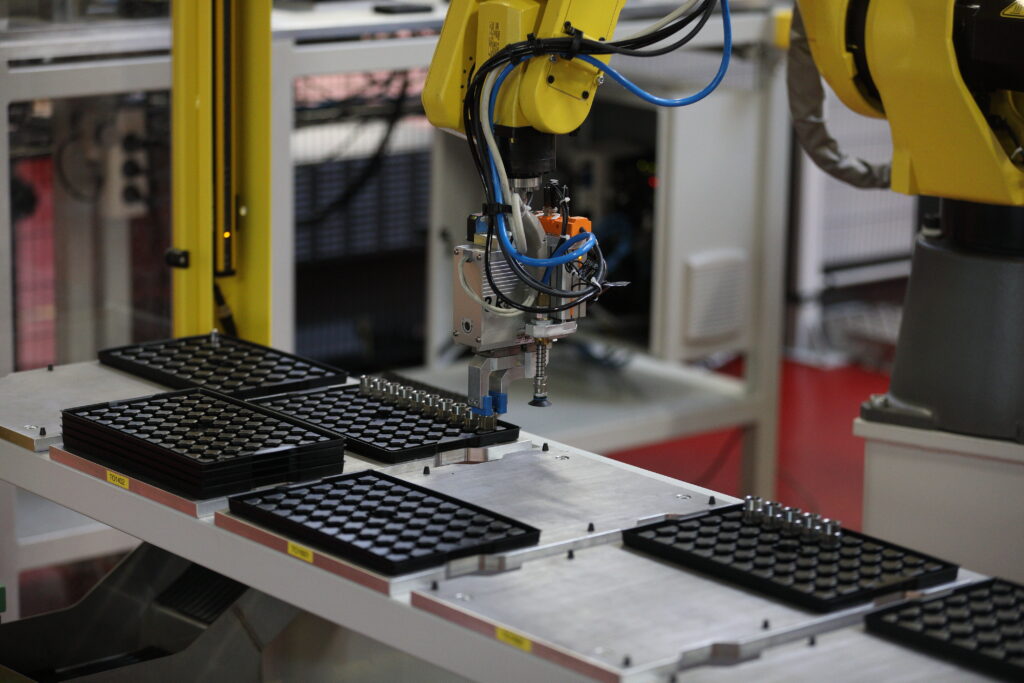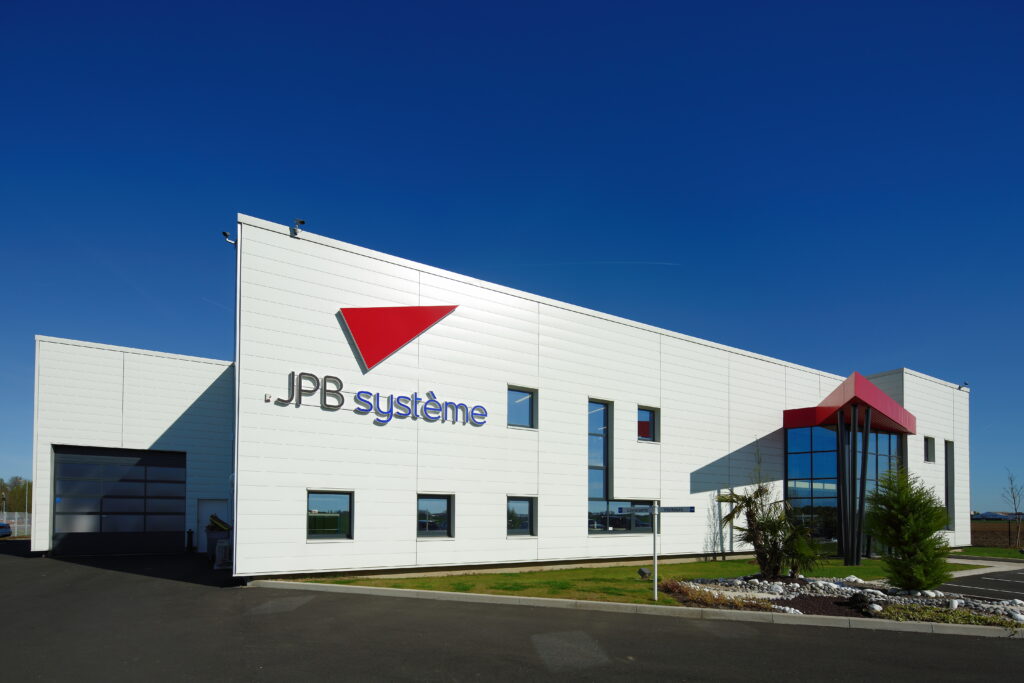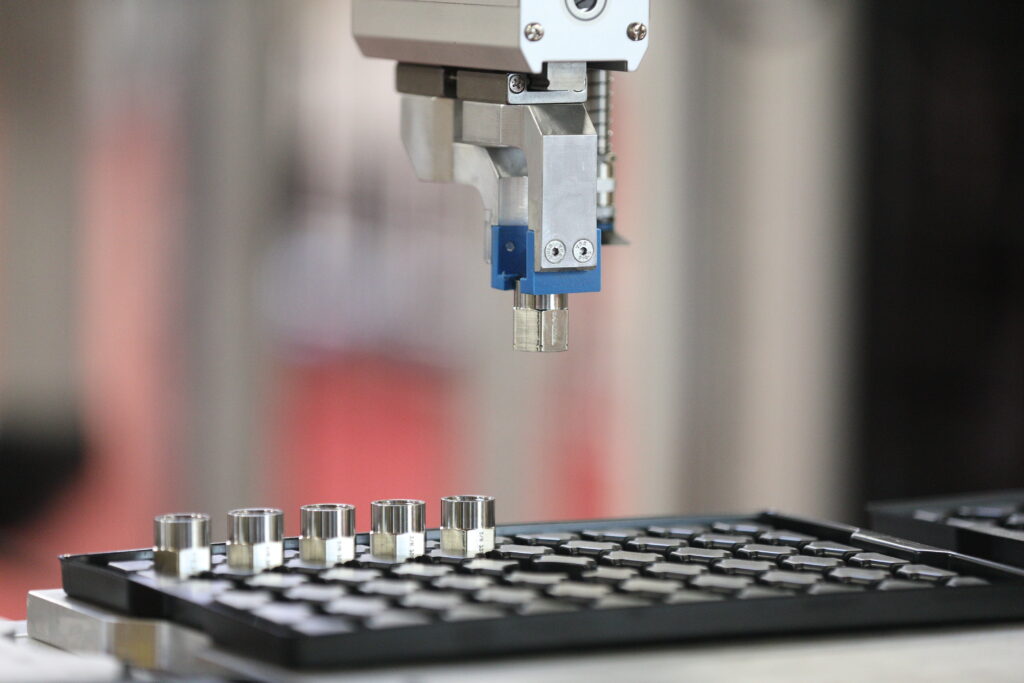I hadn’t heard of aerospace/defense manufacturer JPB Système, based in France with additional offices in the US and Poland, until about a month ago. This isn’t a reflection on JPB Système, which has certainly been increasingly active over the last decade, but simply because when it comes to small and medium enterprises (SMEs), I’m mostly familiar with pure play additive manufacturing (AM) companies.
However, JPB Système is an excellent reminder that I need to start paying more constant attention to the SMEs that have footholds in multiple emerging technology spaces. That particular category of companies looks like it’s about to make a major impact on the AM sector’s future trajectory and, as was affirmed for me by my talk with JPB Système’s CEO, Damien Marc, this seems to have everything to do with automation.
Bringing Production In-house
Originally, JPB Système was exclusively an engineering company. It performed the R&D and design for the parts that it sold, then used subcontractors for the manufacturing side of things. However, by around 2017, the company was conducting too much business for its suppliers to keep up. This highlights one of the most overlooked facts regarding globalization’s intractable supply chain crisis, which is that, across a variety of critical industries, the problems were already mounting well before the onset of the pandemic.
Finding his business in the simultaneously fortuitous and panic-inducing situation of outpacing his suppliers’ growth capacity, Marc was quite ahead of the curve in his approach to the problem of filling the gaps that existing suppliers can’t keep up with. He took JPB’s manufacturing into the company’s own hands. This is what I find most interesting about JPB’s path, that it was forced by external conditions to accelerate its automation efforts, a matter of necessity and not of choice.
“I took the decision to incorporate manufacturing into our core business. And that was a tough decision — our business is global, our competition is global, so we need to produce at the best quality and the best price,” explained Marc. “France was not necessarily the best choice in that sense, so I was going to look around and maybe buy a company. I didn’t find what I was looking for, but then I realized there was one other way I might be able to do it.”
Marc’s plan was to use CNC machines, with the business logic behind the idea that the equipment cost more or less the same no matter the country, but hiring the higher-salary workers in the French market could allow JPB to get the most value out of each machine. Marc quickly ran into trouble with this idea, as well. Much like in many of the other most heavily industrialized nations, good CNC operators that don’t already have jobs are just hard to come by. He finally settled on using CNC robots for the low-value tasks, so he could “center the operators in high-value operations.” This was a promising turning point, although it came with its own set of challenges:
“When I put two different machines in the workshop, they weren’t able to communicate with each other,” Marc said, referring attempts to connect his first CNC robot to an inspection machine. “There is no protocol. I was really surprised because my background is computer skills and electronics.”
JPB ended up having to make its own programmable logic control (PLC) language in order to get the machines synced: “So, we created the communication between those two machines, and at the end, the machine for production was producing, the machine for inspection was inspecting, and the inspection machine was sending the offsets corrections to the production machine. We successfully created our first closed-loop.”
How Automation Led to Hiring More Workers
If it sounds like this was no big deal, I should point out that it took about eight months from start to finish. They eventually got it done, and the turn to automation helped JPB manage the most uncertain macroeconomic conditions in about a half a century, without losing a single worker. In fact, Marc says that the more robots they incorporate into production, the more workers they’ve had to hire, which is another broad Industry 4.0 theme that JPB encapsulates. Since all of the laying off of manufacturing workers in the most industrialized nations has already more or less happened gradually over the last 40 years, there aren’t nearly as many jobs for robots to take in those countries as one might initially think:
“Each time I’ve bought one robot, I’ve hired three more workers. My approach was to say, you know what? The robots are not your enemies. And we have to work together to make the robots work lights-out. And when I tell you the story, everything looks nice and very simple, but it was a nightmare because when we first introduced the robots, we lost 30 percent productivity. We ended up with many problems that we didn’t expect, and the best people to solve those issues were my workers on the workshop floor, because they stayed aware of every single issue the robots were facing.”
Marc then described how he was able to motivate the team to learn to make the robots work overnight, which allowed them to ultimately return to 100 percent overall equipment effectiveness (OEE), even improving upon that on their best days by 20-40 percent. “We are competitive on the French market, from the French market because of that,” Marc concluded.
3D Printing Robots
His initial success with automation in robotics is one of the key factors that led Marc to think ahead and start looking into additive manufacturing (AM), which is ultimately why I first heard about JPB. After exploring the technology for prototyping for a few years, JPB started looking into metal binder jetting (MBJ), and in June, the company acquired a stake in Addimetal, a French startup that manufactures MBJ platforms, founded in 2021. Then, also in June, JPB received a France 2030 government grant for R&D into the decarbonization potential of MBJ in the aerospace sector.
“I started working on 3D printing because I realized in 2017, maybe we are seen today as the manufacturing of the future, but I’m sure that in ten years the workshop will look pretty old. 3D printing really amazed me for the capacity for sovereignty, for design freedom, for the capacity to manufacture on-demand, and lightweighting. Then we started looking into MBJ because for me, it’s really good for small parts in large quantities. We’ve bought our first MBJ system and are buying two more.”
Marc emphasized that, in addition to JPB’s own particular interest in AM, the company’s gradually increasing focus on MBJ was being driven by the interest from JPB’s customer base. This includes some of the world’s largest aerospace manufacturers, including GE Aerospace, Rolls Royce, and French multinational Safran SA:
“I noticed that there was an explosion of AM activity in France several years ago, but ultimately in aerospace nothing really serious happened. But we’ve reached a new point that is making it very serious, because now it’s more mature. All our customers have also integrated it as a solution. If you look at Safran for example, they just opened a 3D printing factory in the southwest of France, close to Bordeaux. It’s definitely part of the strategy for the aerospace sector now, so this is why we are now plugging in with our customers to synchronize our efforts, and to try to qualify the first product. For example, with MBJ, as far as I know, there is no part on an aircraft engine made with that by any of the engine manufacturers. But they’re all looking at this technology as the future of the business. We’re talking about aviation, so we have to look long-term, right? And I think MBJ will mainly be for the next-generation aircraft, meaning somewhere between 2026-2030: in ten years, it will be common, so in five years, it will be on track towards that. But then it’s long-term — once it’s on an aircraft, it’s on it for 40 years.”
Along with Addimetal’s being headquartered in France, Marc was also impressed with the openness of the platform. As Addimetal’s website notes, its machine parameters “…are open in an easily accessible interface, allowing testing and qualification of new materials.” And, Marc said, there is also JPB’s experience in succeeding at scaling up, which the company is eager to share with other young companies — not just to build JPB’s portfolio, but to contribute to the establishment of France’s smart manufacturing ecosystem:
“Addimetal started its MBJ project a few years ago, and we were able to see the first prototypes running. We were really impressed not only by the capacity of the machine, but by the precision of the printing. So we started working with them, and the first was perfect because they’re a startup, and we’re kind of a startup, and also very tech-oriented. Then they were looking for VCs to invest in the company, and I basically said, hey, why not do that together? We want to incorporate your technology, we want to help you bring it to the market, and we know how to industrialize, so we can help you with that. We have strong access to our customers, strong access to finance, and if you need find some money and raise some money from the market, let’s do that as a team. Everything started very naturally.”
When I asked Marc if JPB was planning on only using MBJ for its own existing product line, or if the company might use it to branch out into other areas, he gave a characteristically bold and unhesitating response: “We’re open to any growth strategy around 3D printing.” It seems reasonable to imagine that decarbonization will be at the forefront of any such strategy, given both the reason behind the company’s France 2030 grant for MBJ, as well as the significance of France’s decarbonization push, in general.
“Our president just announced 300 million euros a year for four years to finance aviation of the future, and it’s definitely all about decarbonization. It’s all about new engines, new aircrafts, less consumption of fuel. It’s the fourth revolution in aircraft. The first revolution was to make them fly, the second was to make them safe, the third revolution has been to make it available everywhere, for everybody. The fourth revolution is to decarbonize, and there’s a big push happening. I was at the Paris Air Show and it was an amazing show, with a lot of energy, and a lot of love from the public. I was amazed by the public days because you hear about aviation-bashing but really, people love it. I think now we just have to communicate as an industry about the decarbonization actions that are being put into place.”
Most intriguingly, Marc reiterated multiple times throughout that he’s seen JPB make a shift from a traditional manufacturing operation to something that looks much more like a tech company. This includes serving as a startup incubator, with JPB having an entire building devoted to that goal.
“I think there still aren’t a lot of small companies in the industry that are pivoting to tech right now, and we are definitely one of them. And it’s created a lot of gaps for the industry because I can see how tech is running, how fast and agile tech companies are at developing strategy, at product management and creating value, and how they sell products from an SaaS point of view. It gives me a lot of new ideas for the industry. And so I think it’s really important to create interconnections between tech and hardware and machining. And in ten years, it’ll all be about software in the industry, for any company that wants to survive.”
Damien Marc and JPB are certainly onto something, and I think that the track record of Marc’s foresight bodes well for the AM sector. Beyond that, JPB is exactly the kind of company that will have to successfully adopt metal AM for technologies like MBJ to scale up on schedule. The fact that Marc has come up with a successful roadmap for incorporating new technologies in stride suggests that many other companies are going to be paying attention to what JPB is doing.
Subscribe to Our Email Newsletter
Stay up-to-date on all the latest news from the 3D printing industry and receive information and offers from third party vendors.
You May Also Like
Further Understanding of 3D Printing Design at ADDITIV Design World
ADDITIV is back once again! This time, the virtual platform for additive manufacturing will be holding the first-ever edition of ADDITIV Design World on May 23rd from 9:00 AM –...
3D Printer Maker EVO-tech Reborn as NEVO3D — Once More With Feeling
EVO-tech was a 3D printing service and original equipment manufacturer established in 2013 and based in Schörfling am Attersee, Austria. The company produced high-quality material extrusion systems featuring linear bearings,...
3D Systems Brings 3D Printed PEEK Cranial Implant to the U.S. with FDA Clearance
For more than 10 years, 3D Systems (NYSE:DDD) has worked hand-in-hand with surgeons to plan over 150,000 patient-specific cases, and develop more than two million instruments and implants from its...
CDFAM Returns to Berlin for Second Annual Symposium
The second CDFAM Computational Design Symposium is scheduled for May 7-8, 2024, in Berlin, and will convene leading experts in computational design across all scales. Building upon the first event...



































